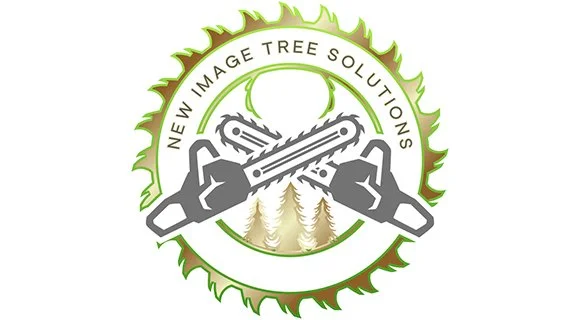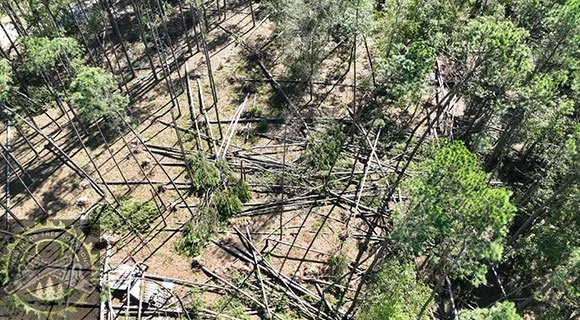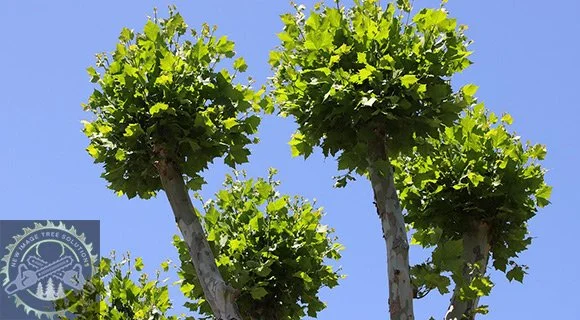Fall and Winter Tree and Shrub Pruning
Are you wondering when you should prune your trees and shrubs? As temperatures cool and growth slows, dead branches, disease, or weak structures become more noticeable. And if left unattended, those issues can worsen during harsh winter storms. Unpruned branches may snap under the weight of ice or snow, and crowded growth can restrict airflow, making plants more susceptible to disease. Knowing the right time to prune (in late fall and winter) can make a significant difference in the health and appearance of your trees and shrubs.
New Image Tree Solutions gathered information about the best time to perform fall and winter pruning, how to identify when your plants need attention, and crucial professional guidance for safe and effective results. This article covers how proper pruning benefits your landscape, when to call an arborist, why New Image Tree Solutions is the right choice for your property, and how pruning supports long-term tree and shrub vitality.
The Best Time for Fall and Winter Pruning
Pruning during fall and winter offers several key benefits. As trees and shrubs enter dormancy, sap flow slows down, reducing the chance of bleeding and stress. Without active growth, cuts heal more gradually and evenly. Additionally, leaf drop in deciduous trees allows for better visibility of branch structure, making it easier to spot and remove dead or crossing limbs.
Late Fall Pruning:
Light pruning in late fall helps remove dead or diseased branches before winter weather arrives. However, avoid heavy pruning immediately after leaf drop since temperatures can still fluctuate. Prune selectively to shape the plant and eliminate problem areas without stimulating new growth (that cold weather might damage).
Winter Pruning:
Mid to late winter, when plants are fully dormant, is ideal for more extensive pruning. This period allows for structural evaluation and encourages vigorous spring growth once temperatures rise. For species (like oak, maple, and apple), pruning during dormancy helps reduce disease spread and insect attraction.
Avoid pruning during extremely cold or wet conditions, as these can make cuts brittle or allow pathogens to enter open wounds.
Why Fall and Winter Pruning Matters
Pruning during dormancy helps direct energy toward healthy growth once spring returns. It also improves air circulation and light penetration, which reduces the risk of fungal infection and promotes stronger branching. For fruit trees, pruning during this period encourages better fruit production.
Beyond plant health, pruning also enhances safety. Removing weak or overextended limbs before winter storms prevents property damage and reduces risk to nearby structures, vehicles, or pedestrians. For shrubs and hedges, shaping before spring ensures controlled growth and balanced appearance.
When to Call an Arborist
While homeowners can handle minor pruning, there are situations requiring professional expertise.
You should contact a certified arborist when:
Large branches hang over roofs, driveways, or power lines
A tree shows signs of internal decay or fungal growth at its base
Shrubs or trees exhibit severe dieback or discoloration
You’re unsure which branches to remove for optimal structure
An arborist can identify structural weaknesses invisible to the untrained eye. They use proper equipment and safety methods to make precise cuts that promote the health of your landscape. Arborists also understand local species and weather patterns, ensuring pruning aligns with regional growth cycles and storm risks.
Read more about ISA Certified Arborist activities and responsibilities at newimagetreesolutions.com/blog/arborist-a-complete-definition
Why Call New Image Tree Solutions
New Image Tree Solutions specializes in expert pruning, trimming, and removal services tailored to the unique conditions found across Roswell and North Georgia. All team members are professionals with extensive experience (diagnosing tree and shrub health, identifying pest and disease problems, and performing safe, effective pruning).
The company uses advanced equipment to ensure clean cuts and minimal disruption to surrounding plants. Whether you need preventative maintenance or emergency storm cleanup, New Image Tree Solutions provides reliable service with a focus on safety and precision. They also educate property owners about seasonal care, helping maintain thriving landscapes year after year.
By choosing New Image Tree Solutions, homeowners receive quality service from a team that values both aesthetics and ecological health.
When to Prune or Remove Trees and Shrubs
Prune:
When branches grow too close to power lines or structures
After storms cause minor damage or hanging limbs
When plants exhibit overcrowding or an unbalanced shape
Remove:
When a tree leans significantly or its roots have lifted
If a disease spreads throughout the trunk or canopy
When insect infestations compromise structural strength
Routine pruning keeps trees and shrubs healthy, but removal may be necessary to protect your property. Early intervention by an arborist can often save a tree before it reaches this stage.
Pruning for Disease and Infestation Control
Pruning also plays a crucial role in managing disease and pest problems common in Georgia’s humid climate. Dead or dying branches can harbor fungi and insects, allowing infestations to spread to nearby trees. Regular pruning removes infected tissue and improves airflow, creating a less favorable environment for pathogens.
For example, fungal infections like powdery mildew or leaf spot thrive in dense, shaded canopies. By thinning branches, sunlight reaches interior leaves, helping control disease naturally. Similarly, pruning trees affected by beetles or borers can stop damage before it spreads to neighboring plants.
When infestations or infections become widespread, professional evaluation ensures targeted treatment and proper disposal of infected debris.
Storm Damage and Emergency Pruning
Severe weather can quickly turn a healthy landscape into a hazard. High winds, heavy rain, or ice can break branches or weaken trunks. In these situations, immediate pruning helps prevent further damage. New Image Tree Solutions offers emergency response services to safely remove fallen or hanging limbs.
After storms, avoid trying to cut large or high branches without proper equipment. Arborists are trained to handle unstable trees and know how to assess the structural safety before making any cuts.
Key Considerations for Fall and Winter Pruning
Successful fall and winter pruning depends on understanding timing, species needs, and proper technique. Before you begin, assess your landscape carefully:
Know Your Plant Type:
Not all trees and shrubs respond equally to cold-season pruning. Deciduous trees generally tolerate pruning well during dormancy, while evergreens may require lighter trimming to avoid stressing foliage.
Use Proper Tools:
Sharp, clean tools prevent tearing and reduce the risk of disease. Always disinfect pruning shears or saws between cuts, especially when dealing with diseased branches.
Avoid Over-Pruning:
Removing too much at once can shock the plant and stunt spring growth. Aim to cut no more than 25% of total branches in one session.
Make Clean Cuts:
Cut branches just outside the branch collar without leaving stubs or damaging the trunk. Proper cuts heal faster and reduce the likelihood of infection.
Monitor for Disease:
Look for peeling bark, fungus, or cankers before you start pruning. Infected areas may require deeper cleaning or branch removal under an arborist’s direction.
Plan for Growth:
Pruning shapes how your trees and shrubs will grow in the next season. Visualize form and remove branches that cross or rub, promoting a balanced structure.
Consider Weather Conditions:
Perform pruning during dry days to reduce pathogen exposure. Avoid frigid days when branches are brittle.
By following these steps, homeowners ensure pruning enhances plant health rather than causing unnecessary stress. Proper seasonal pruning protects against storm damage, supports vibrant spring growth, and contributes to a well-maintained, visually appealing landscape.
Pruning Season
This article outlined the best times and methods for pruning trees and shrubs during fall and winter, how to identify when to call an arborist, and why professional help from New Image Tree Solutions ensures safe and effective care.
By pruning at the right time, you’ll strengthen your plants, improve safety, and encourage robust spring growth. Regular maintenance promotes beauty and resilience across your landscape while preventing costly damage.
Neglecting seasonal pruning can lead to broken branches, the spread of diseases, and storm hazards. Without proper care, your landscape may lose structure, beauty, and long-term health.
Sources:
yardandgarden.extension.iastate.edu/how-to/proper-time-prune-trees-and-shrubs
extension.umn.edu/yard-and-garden-news/winter-good-time-prune-trees-and-shrubs
(404) 680-0041







